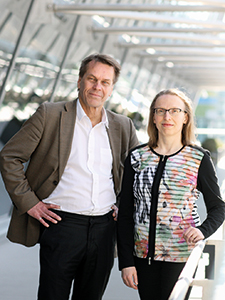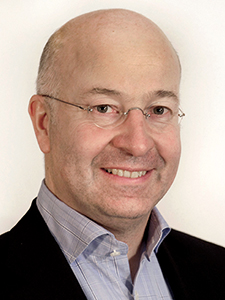Currently around 90% of the side streams produced at UPM mills are reused in other processes. UPM’s target for 2030 is zero solid waste dumped at landfills and zero incineration of side streams unless the energy is re-harnessed and exploited.

Pekka Stålberg, Katja Viitikko
Pekka Ståhlberg, Director of UPM Business Support says that Finland’s ongoing Zero Solid Waste project confirms UPM’s position as a frontrunner in the circular economy. Stricter waste legislation and increasing cost pressures are key drivers behind this trend.
“We have to find a sustainable solution for side streams, enabling us to reuse excess materials and generate added value for us. Our aim is to define the best operational practice in these areas and scale them up UPM-wide in Finland. The target is for UPM to become a Zero Solid Waste company in Finland.”
Harnessing side streams will also have a clear impact on UPM’s EBITDA. Not only does it eliminate costs coming from solid waste treatment and landfills, but it also creates extra income from external sources.
The Zero Solid Waste project focuses on five main side streams: ash, sludge, dregs, wood-based fraction and landfill operations. Most of UPM’s solid side streams are used for landscaping or incinerated for energy. Only a small fraction of waste goes to landfill.
“We are currently doing research and development exploring several new applications where we could use these side streams. Fractions could be used in applications such as biogas production or in fertilisers. At the same time, we intend to create new business models and find new partners for cooperating in this field,” adds Katja Viitikko, who is responsible for the side stream reuse programme at UPM R&D.
Ahead of the curve
Germany has a long tradition of exploiting side streams such as wood-based fraction, deinking sludge and ash for various end uses. Deinking sludge is used as an additive and raw material in brick production and in the cement industry as a carrier and filler.
Thanks to these determined efforts, UPM mills have reduced solid landfill to zero in Germany and Austria.

Thomas Krauthauf
Thomas Krauthauf, Senior Manager Business Development at the UPM Schongau/Ettringen mill notes that the costs of disposing of solid waste streams have decreased significantly in recent years due to closed recycling loops with other industries.
As an example, the UPM Schongau mill has successfully developed new recycled products from ash generated in recovery boilers. “We have created new products by selecting certain ash fractions and developing their properties further. These fractions are now more effective in soil stabilisation and they can be used in other new applications as well,” Krauthauf says.
For commercial applications to be successful, it is essential to find the right partners and to know the customers’ production processes in order to invent optimised new products in the field of secondary raw materials.
“We can guarantee our customers a continuous raw material stream. At the same time we have improved our quality control system to ensure that our raw material properties match specifications. With demand for these materials growing, we have successfully increased prices while also decreasing our cost,” he adds.
You can read more about our responsibility targets for 2030 in UPM's Annual Report 2015 »
Also read the previous Zero Waste article »
Vesa Puoskari
